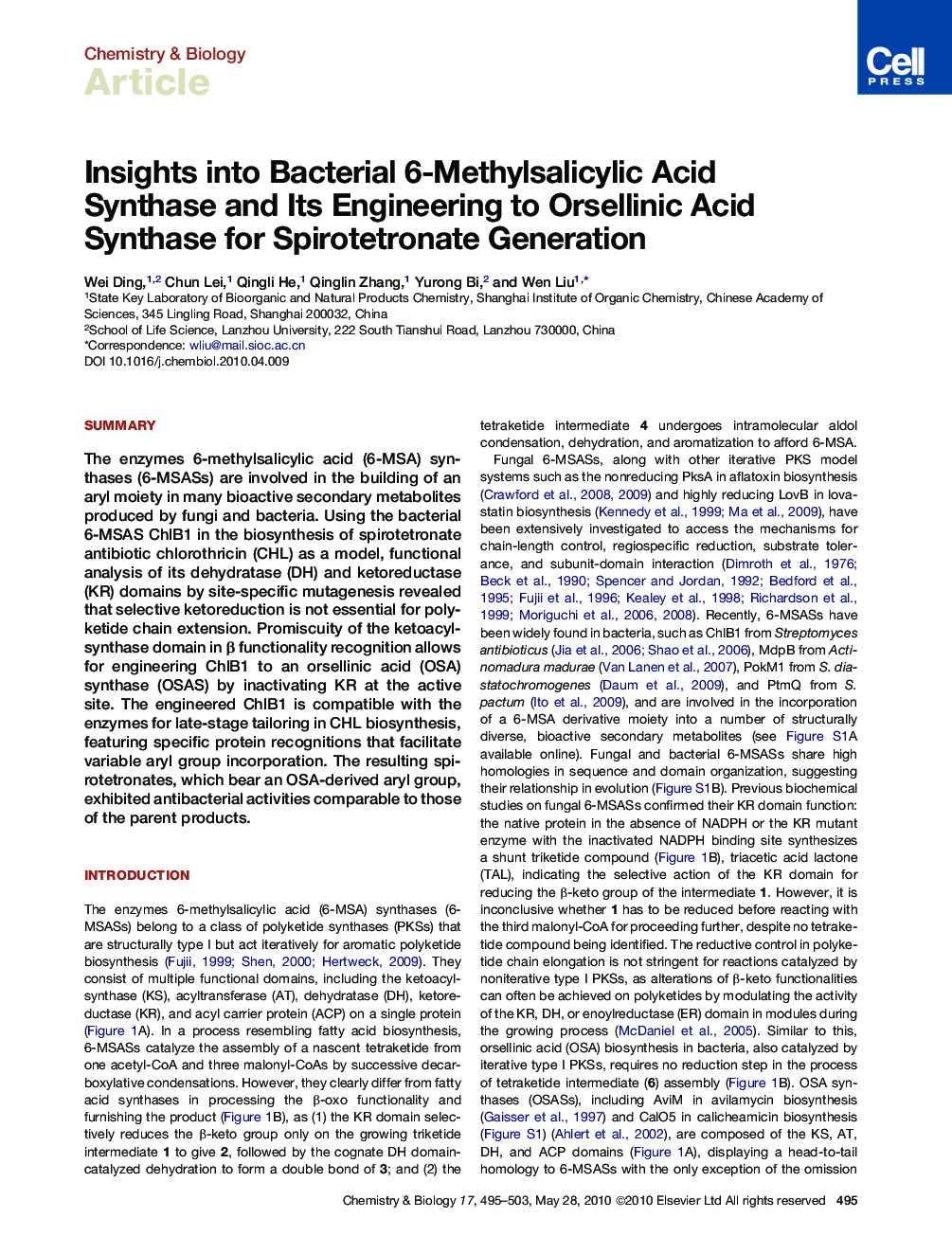| Article ID | Journal | Published Year | Pages | File Type |
|---|---|---|---|---|
| 1391589 | Chemistry & Biology | 2010 | 9 Pages |
SummaryThe enzymes 6-methylsalicylic acid (6-MSA) synthases (6-MSASs) are involved in the building of an aryl moiety in many bioactive secondary metabolites produced by fungi and bacteria. Using the bacterial 6-MSAS ChlB1 in the biosynthesis of spirotetronate antibiotic chlorothricin (CHL) as a model, functional analysis of its dehydratase (DH) and ketoreductase (KR) domains by site-specific mutagenesis revealed that selective ketoreduction is not essential for polyketide chain extension. Promiscuity of the ketoacylsynthase domain in β functionality recognition allows for engineering ChlB1 to an orsellinic acid (OSA) synthase (OSAS) by inactivating KR at the active site. The engineered ChlB1 is compatible with the enzymes for late-stage tailoring in CHL biosynthesis, featuring specific protein recognitions that facilitate variable aryl group incorporation. The resulting spirotetronates, which bear an OSA-derived aryl group, exhibited antibacterial activities comparable to those of the parent products.
► The 6-MSA synthase ChlB1 can be engineered to generate an OSA synthase ► ChlB1-controlled ketoreduction is not essential for polyketide chain extension ► The engineered ChlB1 is compatible with the chlorothricin biosynthetic machinery ► The specific protein recognitions facilitate spirotetronate generation
